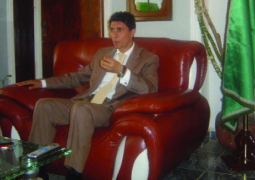
We know they spend most of their time one our beaches called “tati-perreh” in wollof and which is derived from the French “Tas de pierre” (pronounced tadepierr) where Tas (pronounced ta) is a masculine noun meaning a heap or pile of something and followed by the preposition “de” meaning of and then “Pierre” being the feminine noun and meaning stone and together meaning a pile of stone or rocks. Tati-perreh therefore refers to the huge deep brownish stones or rocks we see all over our beaches from Banjul to Kartong and not the beach itself with its soft sand and sea waves and sediments. We must never confuse Tati-perreh with the beach as we know it. As just mentioned, it is the stones or rocks stockpiled perhaps through sedimentation over time. Whoever knows the wollof word for beach should kindly tell us for it is certainly not tati-perreh begotten from “Tas de pierre” and pronounced “tadepierr”. As kids, we played football and jogged along the Banjul beach and in those days, the Tas de pierre were seen all over but now they are dangerously disappearing through being submerged or uplifted? Without the stones or rocks, we can no longer refer to the beach as Tati-perreh or its French equivalent Tas de Pierre. These stones or rocks may not be endowed with the same historical significance like the Stones at the Stone Circle in Wassu but they do deserve special attention because if they disappear, the wollof word Tati-perreh derived as mentioned above from Tas de Pierre and meaning heaps or piles of stones or rocks would no longer be applicable or used in reference to the beach and would be rendered obsolete and may plummet into oblivion to those who know its origin.
The Tourists also come for our Sun and the Sunshine. The Sun in wollof is called “Janta” and this is derived from the French feminine noun Jante meaning something round like the rim of a wheel and it is this roundness – like what the sun looks like at sunset – that engendered our Janta in wollof. Therefore our Janta meaning the sun is a description of the shape of the sun rather than the sun itself. Who can tell us the wollof word for sun if at all it exists? The sun produces rays we call sun rays and these rays are called Nach in wollof. This one is a bit tricky. Nach implies something hot but paradoxically, it is derived from the French feminine noun Neige (pronounced nege with a soft letter g) and meaning snow or the verb Neiger meaning to snow. The third person singular in the present tense of Neiger is “il neige” meaning it is snowing or the snow is falling. The idea here is that the sun rays fall or drop just like the snow falls or drops and it is this downward action from above that was attributed to the wollof Nach (a direct derivative of neige) indicating that the rays are also falling or dropping. The effect of the sun rays is the heat produced and this in wollof is called “Cholo” derived from the French feminine noun Chaleur meaning heat or warmth and this is exactly what the Tourists need to tan their skin when basking. The sun is located up in the sky which in wollof is called “Assaman” and the other bodies located there are “Werr” being the moon and “Bidew” being the stars all of them derived from the French and have been treated neatly and clearly in the big picture paper that is now complete and will be out anytime from now and which will unleash one of the hottest debates ever witnessed in our country and even beyond as regards the origin of wollof – how were the French able to dismantle the language of the ancestor and impose their own? As a matter of fact, the wollof word for something Clear (like I just said) or Transparent is “Lerr” as in “Dina Lerr” or “Na Lerr” and this Lerr derives from “L’air” (pronounced lerr just as in the wollof) which is a fusion of the masculine definite article “l’” and the masculine noun “Air”. The French expression is “Mettre quelque chose à l’air” meaning to put something out to air implying more light. Some hundred and fifty years or more ago when the French started coming and imposing their language onto the local populace (let us remember that the French General Louvel from whom our Louvel Square is named arrived in Bathurst in 1831with his men to defend the city then a town from the invading forces of the King of Barra), there was no electricity, no torch light and not even candle light. People lived in small thatched huts where it was even dark during the day let alone at night as there were no windows etc. To see clearly or to do something in a transparent manner, light was needed and thus the need for this to be done outside thereby begetting our Lerr from L’air. The advent of electricity and windows now make it possible to do things inside the house (not inside thatched huts as before) thus making it possible now to say that it is “Lerr” inside the house or room. The first letter “L” in the wollof lerr therefore is the masculine definite article. Lerr – L’air – Light.
Tourists also visit historic sites and one of these is Juffureh the home of Kunta kinteh the ancestor of Alex Haley that ended up in America as a slave. The wollof word for slave is “Jam” and this derives from the French expression “Traiter quelqu’un sous les Jambes” meaning to treat someone like a slave. “Traiter” is the verb meaning to Treat and “quelqu’un” meaning someone and the preposition “Sous” meaning under and the feminine noun “Jambes” meaning the Feet. Under these circumstances, someone’s head is under someone else’s feet like a slave with Jambes being the feet. The wollof only says “Jam” but this derives from Jambes (pronounced Jamb) and meaning a slave in wollof like a real slave or a slave in the traditional or cultural sense. Like me being a ‘slave’ to the children of my uncles in the cultural sense. Are Mrs Ya Fatou Njie Senghore and others reading this? Some of these Tourists are real philanthropists and they visit clinics and hospitals and schools to offer whatever help they can. When in the hospitals or “Lopitan” which is derived from the French L’hôpital” being a condensation of the masculine definite article “l’” and the masculine noun hôpital meaning a hospital to produce l’hôpital begetting our Lopitan, they do assist in various ways. L’hôpital gave birth to Lopitan just like giving birth to babies at the Labour room where the Tourists could also visit. To give birth in wollof is “Wosin” and this derives from a French verb which is already treated in the upcoming paper. Like many other French words it is not exactly giving birth that wosin is derived but an action that takes place during the period of giving birth. We give birth to babies in wollof called “Neneh” and which derives from the French masculine noun Néné (pronounced naynay) and meaning Boobs or Breasts and this presupposes that the boobs or breasts are just and only for the babies. Linkage is here made between the baby and the organ. Another wollof word for baby is “Dorm” and this stems from the verb Dormir meaning to sleep as babies sleep a lot. The third person plural in the present tense of Dormir is Dorment (pronounced dom) from whence our Dom. So what is the wollof word for baby? Whoever knows should kindly tell us. Some of these babies could be recipients of gifts from Tourists – yes some do receive gifts even after the return of the Tourists to their home countries.
The Tourists also visit the Craft or Tourist Markets. A Market in wollof is “Marrseh” derived from the masculine noun Marché also meaning a market.
These Tourists are mostly White people we call Toubabs and this also derives from the French (a pronoun and a verb and an adverb) but because it requires special treatment I cannot dilate on it here but it will surely appear in the big picture paper. Their coming here is to take shelter from the cold and the wollof word for cold is “Seda” also derived from an adjective called Tiède (pronounced ched) meaning tepid or lukewarm and the idea here is that when the temperature drops on things like water or food or anything else, it becomes tepid or tiède begetting seda not really very cold nor hot but bearable and thus consumable as in water, food or another beverage thus Seda with some saying just Sed completely dropping the letter “A” at the end. The French language permeates each and every aspect of greater Banjul area wollof – not just tourism - and as the big picture paper (now fully complete) will reveal, “dina Lerr oranother expression “Sortir à l’air or come to Light.By SHEIKH TIJAN M.D.SALLA.





